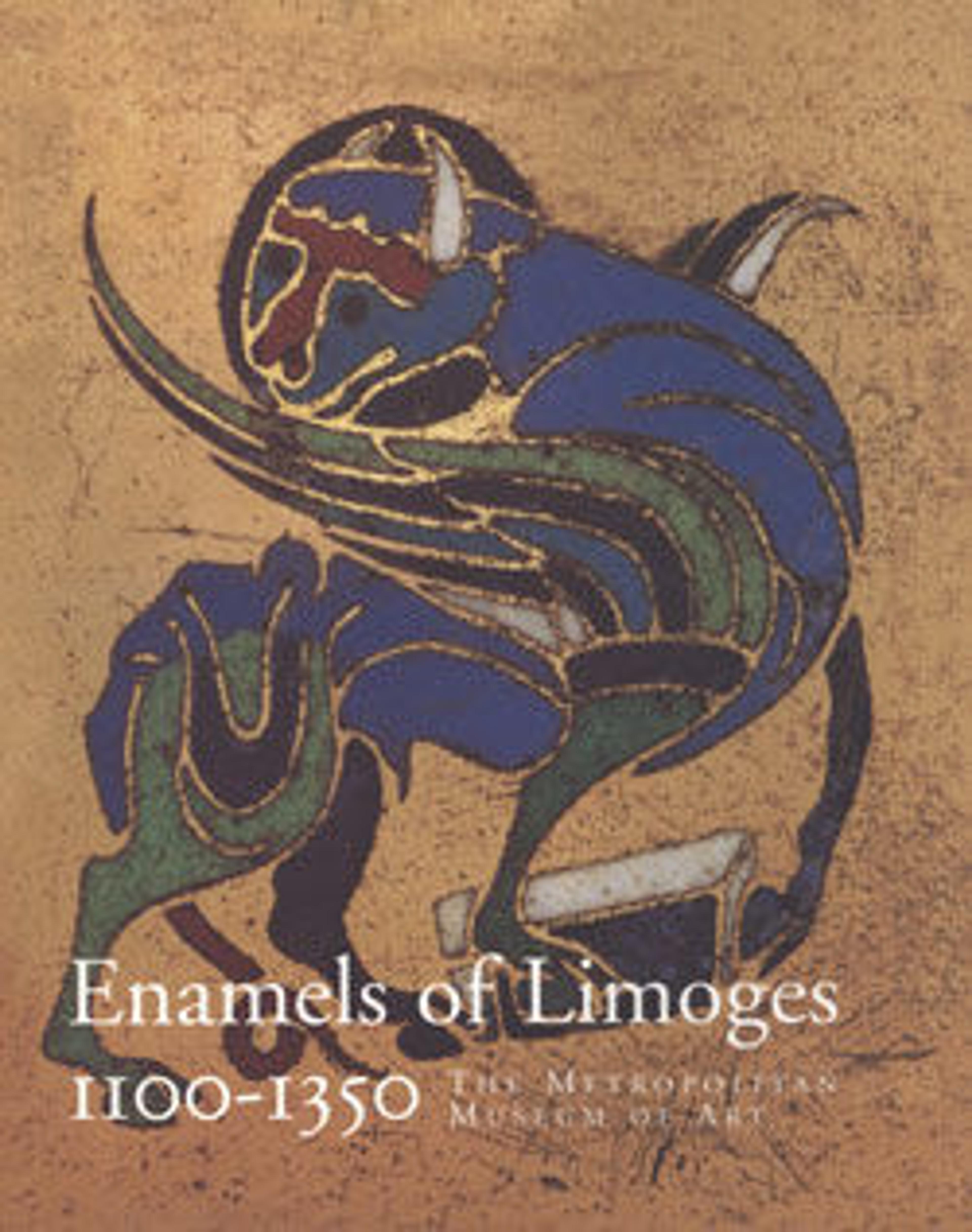Book Cover Plaque with Christ in Majesty
The earliest known textual reference to the famous enamels produced in the city of Limoges during the twelfth through the fourteenth century concerns a book cover seen in the Abbey of Saint Victor in Paris in the 1160s and intended for an English abbot. Plaques showing Christ in Majesty surrounded by symbols of the evangelists, usually paired with a plaque showing the Crucifixion, were produced in large numbers by Limoges enamelers. The textures and patterns created through the engraving and stippling of the five appliqué figures make this a particularly noteworthy example.
Artwork Details
- Title: Book Cover Plaque with Christ in Majesty
- Date: ca. 1185–1210
- Geography: Made in Limoges, France
- Culture: French
- Medium: Copper (plaque): engraved, scraped, stippled, and gilt; (appliqués): repoussé, engraved, chased, and gilt; champlevé enamel: blue-black, dark, medium, and light blue; green, yellow, red, brownish red, and white, blue-black glass inset eyes.
- Dimensions: Overall: 10 3/4 x 5 9/16 x 11/16 in. (27.3 x 14.2 x 1.7 cm)
- Classification: Enamels-Champlevé
- Credit Line: Gift of J. Pierpont Morgan, 1917
- Object Number: 17.190.757
- Curatorial Department: Medieval Art and The Cloisters
More Artwork
Research Resources
The Met provides unparalleled resources for research and welcomes an international community of students and scholars. The Met's Open Access API is where creators and researchers can connect to the The Met collection. Open Access data and public domain images are available for unrestricted commercial and noncommercial use without permission or fee.
To request images under copyright and other restrictions, please use this Image Request form.
Feedback
We continue to research and examine historical and cultural context for objects in The Met collection. If you have comments or questions about this object record, please complete and submit this form. The Museum looks forward to receiving your comments.
